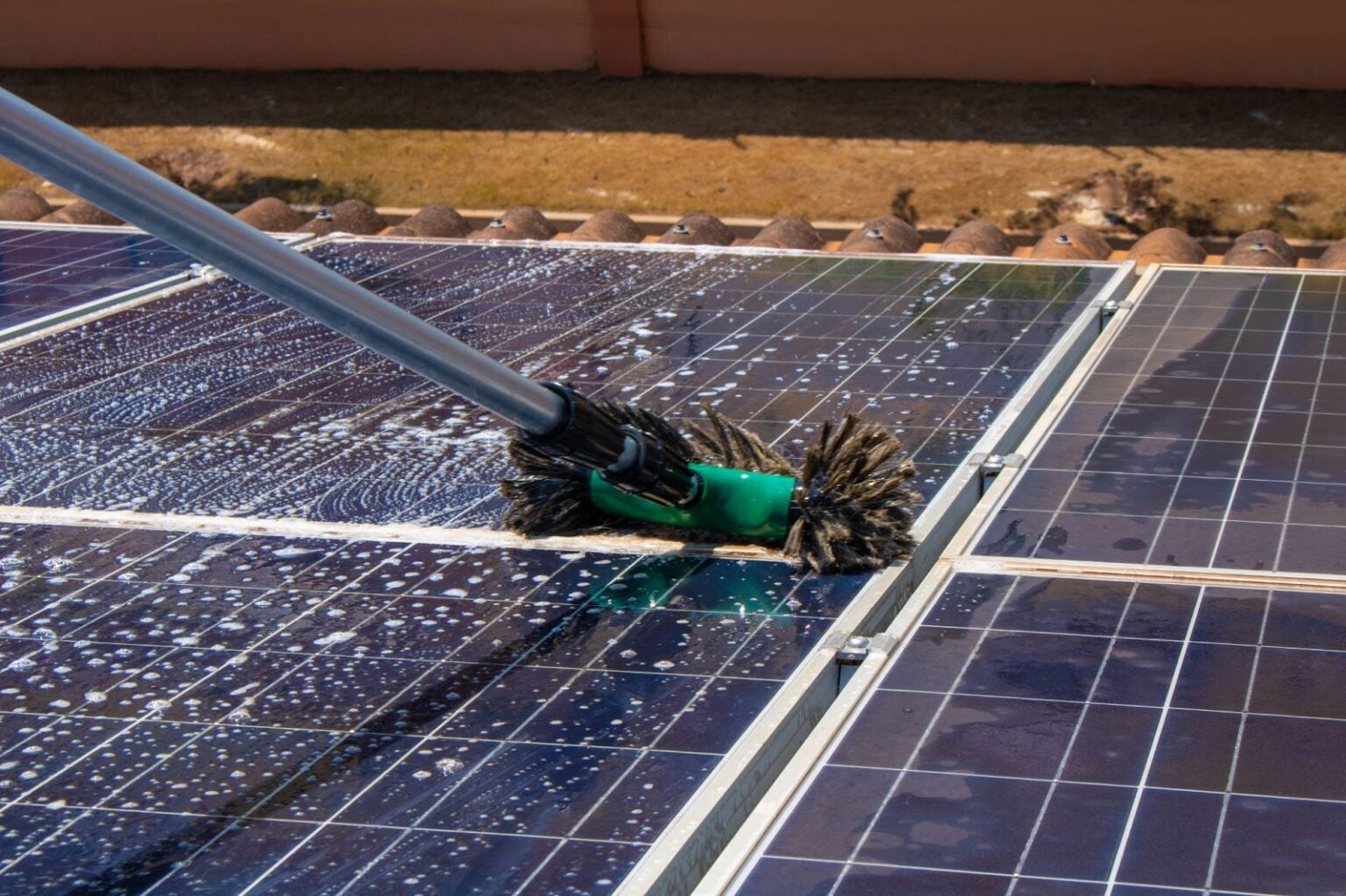
Your solar panels work hard every day converting sunlight into power — but when they’re covered in dust or debris, their performance can drop dramatically.
In Texas, where wind, pollen, and unpredictable weather are constant, solar panel cleaning isn’t just cosmetic — it’s essential. Knowing when your system needs professional cleaning can make a big difference in your energy output and your long-term savings.
Here are the top signs it’s time to schedule a professional cleaning.
1. You Notice a Drop in Energy Production
If your monitoring app or energy bill shows a noticeable decrease in power generation, buildup could be the cause. Dust, pollen, or water stains block sunlight from reaching your panels, forcing your system to work harder for less energy.
A simple professional cleaning often restores full efficiency within hours.
2. Your Panels Look Dull or Hazy
Solar panels should have a clean, reflective surface. If they appear cloudy, streaked, or hazy, that buildup is scattering sunlight before it reaches the cells.
Professional technicians use purified water and solar-safe tools to gently remove grime without scratching or damaging your panels.
3. You Live Near Dust, Trees, or Construction
Homes near busy roads, trees, or construction sites accumulate dirt faster. Pollen, bird droppings, and fine dust can stick to panels, especially during dry Texas summers.
If you notice visible dirt on your panels or surrounding debris, it’s time to schedule a cleaning.
4. You See Bird Droppings or Tree Sap
Unlike dust, bird droppings and sap are highly acidic and can cause long-term surface damage. These stubborn spots block light and may require special cleaning techniques to avoid etching the glass.
Professionals know how to remove these safely while protecting the integrity of your solar system.
5. It’s Been More Than Six Months Since Your Last Cleaning
Even in mild conditions, panels accumulate dirt over time. Cleaning every six months — or quarterly for high-dust areas — ensures consistent performance and prevents stubborn buildup.
Regular cleanings are especially important during Texas pollen and dust seasons.
6. You Notice Uneven Shading or Streaks
If parts of your system are shaded while others are bright, the darker sections may be coated with dirt or grime. Uneven buildup can lead to “hot spots,” which cause certain cells to overheat and reduce overall efficiency.
Professional cleaning evens out performance across your system and extends panel life.
7. You’ve Experienced a Storm Recently
After Texas storms, panels often collect mud, leaves, and debris. Even if your roof looks clean, a thin film of dust can reduce energy absorption. Post-storm cleaning removes residue and prevents long-term performance loss.
8. Your Monitoring Data Shows Fluctuations
Sudden spikes or dips in energy output — especially during clear weather — often mean dirt or debris is affecting production. Cleaning helps reset your baseline performance and ensures your monitoring app shows accurate readings again.
9. You See Hard Water Spots or Mineral Streaks
In areas with hard water, rainfall can leave behind mineral deposits that scatter light. These spots don’t rinse off easily and can damage panel coatings if left untreated.
Professional cleaning uses deionized water that leaves panels spotless and streak-free.
10. You Want to Protect Your Warranty and Investment
Many manufacturers recommend or require regular cleanings to maintain warranty coverage. Skipping professional maintenance could void your warranty or reduce long-term system reliability.
Routine cleanings protect your system, your roof, and your warranty all at once.














